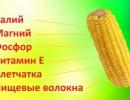Lespedeza two-color medicinal properties and contraindications. Buy Lespedetsa two-color
In Primorye, when almost all the plants have already faded, the forest edges illuminated by the sun, rocky slopes and stony taluses covered with wonderful picturesque thickets of branchy deciduous shrub called Lespedetsa bicolor blaze like a bright fire. This shrub belongs to the legume family. Its distribution area is Korea, Manchuria, Eastern Mongolia and the Far East.
Lespedetsa bushes are so beautiful thanks to the crimson-red and sometimes white flowers in the form of a complex pyramidal panicle, which, when wilted, takes on a blue color. These blue flowers last a long time on the branches, making them unusually elegant.
Usually Lespedetsa bushes reach a height of 2.5 m, but in the vicinity of the city of Ussuriysk, individual specimens with a height of 3.2 m were described.
Twig-like green shoots of Lespedets with thin delicate trifoliate leaves on long petioles form a rounded crown. The leaves, having a dark green color at the beginning of summer, with the onset of autumn become golden yellow, reddish-brown, reddish. If the summer was warm, by October the fruits of Lespedets ripen on the branches in the form of unfolding flat pubescent beans with a short nose and one seed.
Lespedece bicolor plays an important ecological role in forests
Thanks to the nodules with nitrogen-fixing bacteria forming on the roots of this shrub, the soil is enriched with mineral nitrogen, which is vital for plants.
Blooming in the middle of summer, Lespedeca bicolor is a valuable honey plant and perganos. Honey has a golden amber color and crystallizes slowly. In the Far East, honey yield from lespedets sometimes reaches 10 kg per day for each of the bee colonies. In China, lespedetsa flowers are used in baking sweet bread and gingerbread, added to soups as spices and served as an addition to sauces.
The healing properties of Lespedetsa
Due to the content of flavonoids in the flowers and leaves of Lespedeza bicolor - quercetin, kaempferol, lespedin, eriodictiol, isoquercitrin, as well as vitamin C, saponins and alkaloids, and in the bark - tannins, it has long been ranked among medicinal plants. Its properties are being thoroughly studied by phytopharmacists at the present time. In Lespedez, bufotenin, which is used to treat Parkinson's disease, causing euphoria, was found. 
The ability of Lespedeca bicolor to reduce cholesterol and blood sugar concentration, as well as anti-stress and antitumor activity, often used in the treatment of fibroids, fibroids and mastopathy in women, as well as prostatitis and prostate adenomas in men, was found.
The stems and leaves (shoots) of Lespedeza bicolor are used for the manufacture of the medicinal preparation Lespedeza - a hypoazotemic, diuretic and anti-inflammatory drug used in the treatment of nephritis.
Found the use of Lespedets in the farm
Shoots of this half-shrub are used to obtain bast fibers for weaving. Lespedetsa bicolor is highly valued as a valuable forage plant with a high content of fats, proteins, as well as phosphorus and calcium.
Due to its beauty, this shrub is used as an ornamental one in Ukraine, Siberia, and the Far East.
In addition, a shrub with a developed root system, nicknamed "griproot" for its properties, is used to strengthen the slopes.
Page: in Primorye
Lespedetsa bicolor in the Far East grows in the undergrowth of deciduous and mixed forests, forming dense thickets.
Often it settles along the cliffs, strengthening them and protecting them from destruction, as it develops a powerful root system. After cutting, the Lespedec gives abundant growth.
In our country, Lespedetsa was grown mainly as an ornamental plant for landscaping cities and towns in Lithuania, Latvia, Belarus, Ukraine, Moldova, etc. for the abundance of pink-purple flowers and large leaves. In Russia, a decorative weeping form of two-color Lespedetsa - L. B. F. pendula hort was bred.
Numerous thin twigs of Lespedets grow up to 2.5 m, due to the high strength of the bast fibers, they smoothly hang in graceful arcs, swaying elegantly in the wind
Lespedeza two-color is an amazing honey plant.
A beautiful, branched, deciduous shrub, up to 1.5-2 m tall, with numerous thin, twig-like, green shoots forming a rounded crown.
It grows quickly, early into the season of flowering, under favorable conditions even one-year shoots bloom.
The leaves are trifoliate, thin, delicate, leaves up to 5 cm, dark green above, when blooming silky pubescent, later almost glabrous, in autumn they are painted in golden yellow and pale reddish buffy tones. It is interesting for its late, abundant and long flowering during the period when most of the plants have faded.

It blooms regularly and very profusely with crimson-red, sometimes white flowers (with a purple end of the boat) in large paniculate inflorescences, which, withering, change color to blue and persist for a long time on the bushes, making them very elegant. Duration of flowering 25-50 days in August-September.

Photophilous, tolerates slight shading, relatively thermophilic, often freezes over, but quickly recovers over the season and blooms beautifully. Drought-resistant, prefers well-drained soil.
Tolerates haircuts and transplants.
Seeds are sown before winter in open ground. For spring sowing, seeds require stratification (2-3 months) in wet sand at a temperature of +2 0 C.
An excellent ornamental shrub for flowering hedges in forest parks, gardens and squares, effective in single and group planting.

Small shrub, sometimes semi-shrub, main branches are raised at first, then deviate arcuate and spread along the ground.
Purple-pink inflorescences, up to 80 cm long, located at the ends of the shoots, from September to frost.
Globular, pea-sized fruits: red-violet from the beginning, ripen only next spring and turn black and blue; according to modern data, slightly poisonous.
Undemanding, grows well on all dry or fresh, well-drained soils, acid to neutral.
Not hardy, freezes heavily, ripens only in mild climates, is very thermophilic, tolerates heat, is resistant to urban conditions, grows well on wet and heavy soils, but blooms little.
When growing lespedets in our conditions, it should be covered for the winter.
Lespedetsu is easily propagated by any available method: by cuttings, dividing the bush, jigging root shoots, beans

Quite winter-hardy two-color Lespedetsa is considered on the territory located south of the line St. Petersburg-Moscow-Saratov. However, in severe frosts, it freezes to the height of the snow cover, and in its absence - to the root collar. In the spring, the shrub is restored and, if the summer is warm and rainy, it will bloom especially magnificently.
Healing properties

Urolithiasis of varying severity, as well as accompanied by inflammatory processes in the kidneys, can be completely cured with the help of Lespedeca bicolor. It, having a diuretic effect, removes sand and small stones that can pass through the ureters, and also promotes the resorption of large stones, which, with the traditional method of treating the disease, are disposed of only surgically. The property of a plant that allows crushing stones was noted in ancient times, and today it is confirmed by the results of scientific research.

Cystitis, which causes not only significant discomfort, but also acute painful sensations, is also treated using drugs prepared on the basis of Lespedeca bicolor. The plant not only helps to relieve inflammation, but also strengthens the immune system, has an antibacterial effect, and destroys disease-causing organisms.
Already after two days of taking the medication, a significant improvement in the condition is noted. The pain syndrome is completely removed, and the urge to urinate occurs much less often. In most patients, after completing the course, the disease no longer recurs.

The plant's property is also useful to cleanse blood vessels from cholesterol plaques, which, accumulating, lead to blockage and the development of atherosclerosis.
Lespedeza not only cleanses, but also strengthens blood vessels, preventing the development of hypertension as well. The substances included in the plant help lower blood pressure, which can help to completely recover from hypertension in the initial stage.

For medicinal purposes, dried stems with leaves and flowers collected in areas with good ecology are used.
Decoction for the prevention and treatment of kidney disease
Thanks to the pleasant taste of this product, it is not difficult to use it. To prepare the broth, 2 tablespoons of dried raw materials are poured with one liter of boiling water, after which the dishes with the medicine are placed on the fire. Keep on low heat for 10 minutes. After that, the broth is removed from the heat and left to infuse for 40-50 minutes, and then filtered. Apply the broth three times a day, one third of the glass half an hour before meals. Treatment is carried out until the manifestations of the disease disappear completely. As a preventive measure, the course is at least two weeks and no more than a month.
Legumes family. It grows in the undergrowth of oak forests and in clearings in Eastern Siberia, the Far East, Northern China, the Korean Peninsula, and Japan. A favorite plant in oriental gardens.
Peat or soil after planting in a layer up to 8 cm.
Pruning
Tolerates a haircut well. Dry branches are removed regularly.
Preparing for winter
Every year in winter, the tops of the shoots freeze over or dry out. Faded inflorescences are removed after the snow melts in the spring, at the beginning of April.
Reproduction
You can propagate by root suckers, dividing a bush, green cuttings, layering, but best of all - by seeds. Seeds germinate well with spring sowing without prior preparation. One-, two-year-old seedlings should be grown in the garden bed, and at the age of 3-4 years they can be planted in a permanent place in the garden. At a later age, transplanting is difficult. Root growth forms a lot. With good care, even one-year shoots bloom. Rooting rate of cuttings is 100% when treated with Heteroauxin or Fiton (94%).
Using
Lespedeza is suitable for single and group planting, loves warm and sheltered places from the wind. Lespedeza attracts attention with its late and long flowering at a time when most of the plants in the garden have already faded. The standard forms are especially beautiful. But they are best used in the southern regions of Russia.
Legumes family - Fabaceae
Lespedetsa bicolor - deciduous shrub up to 2-2.5 m high. The leaves are trifoliate, oval, thin, on long petioles. The flowers are crimson-purple in paniculate inflorescences. Fading, they acquire a blue color and do not fall off for a long time.
Blooms from July to September.
Spread
South of the Russian Far East (Primorye, Amur region, Sakhalin, southern Kuriles), northern China, Korea, Japan.
Habitat
It grows in the undergrowth of mixed or broad-leaved forests, forms dense thickets along the edges, in burnt-out areas and clearings, along rocky slopes. In southern Primorye, it often grows together with Mongolian oak, especially on the ridges and slopes of southern exposures.
To the soil is undemanding. Photophilous, grows rapidly.
Chemical composition
Lespedetsa leaves contain about 700 mg% of flavonoids (quercetin, kaempferol, isoquercitrin, lespidin, etc.), more than 170 mg% of ascorbic acid, a number of alkaloids.
pharmachologic effect
Preparations of flavonoids from Lespedeza leaves have a diuretic effect and promote the elimination of nitrogenous metabolic products from the body. It has also been shown that flavonoids from Lespedeza reduce elevated blood and liver cholesterol levels.
Dosage forms
Lespeflan is an aqueous-alcoholic purified extract of Lespedeca bicolor, containing the sum of flavonoids.
Application
Lespeflan is used as a hypoazotemic (lowering the level of nitrogen in the blood), diuretic and anti-inflammatory agent in the treatment of chronic renal failure of various origins. In terms of effectiveness, Lespeflan is not inferior to the imported analogue called Lespenephril - a preparation from Lespedetsa capitate (L. capitata Michx.). Contraindications to taking both drugs are mainly associated with the presence of alcohol in their composition.
Dried leaves of Lespedets are brewed instead of tea and drunk to prevent kidney diseases.
Lespedeza is a good honey plant and perganos. It is prized in beekeeping for its long flowering. Lespedetsa leaves are food for sika deer.
Like other legumes, Lespedeza enriches the soil with nitrogen compounds due to the activity of nitrogen-fixing bacteria in root nodules.
Decorative. Divorced in landscaping.
Procurement of raw materials
Lespedetsa leaves are collected and dried during flowering and budding.
Continuing the topic of interesting woody, today we will talk with you about some representatives of the Legumes / or Moths family, which have pink, pink-purple, crimson, lavender, lilac, purple flowers.
Some of them bloom in spring, others now in summer, and still others will appear in all their beauty only in autumn. So, let's get acquainted:
Shrub amorph

A photo
After Alexander (alexkis) posted a photo of the Amorpha fruticosa inflorescence on our website, I reconsidered my attitude towards it.

A photo
I was also impressed by the fact that it is presented in 2 volumes of the best garden plants - the encyclopedia of the Royal Horticultural Society of Great Britain. And this is no coincidence: she is good for everyone:
- growing rapidly;
- she has beautiful feathery leaves, up to 30 cm long;
- its dark purple tubular flowers 2 cm long, with protruding yellow stamens, are exotic and mysterious; they are collected in spike-shaped brushes, up to 15 cm long;
- its beans are fragrant: when rubbed, you can smell the smell of pepper;
- gives very beautiful hedges, formed by annual shoots, when cut on a stump annually;
- winter-hardy: Vera Tyukayeva's shrub amorph grows in Biysk, and even if it does not winter well and does not bloom, Vera has no reason to be upset anyway. it gives gorgeous green shoots up to 2 m long!
- light-requiring, but withstands partial shading;
- drought-resistant;
- tolerates saline soils;
- itself is a soil-improving breed.
In Nikitsky Botanical Garden (hereinafter referred to as the Garden) it grows on clumps 74, 81, blossoms and bears fruit.
Chinese wisteria

Chinese wisteria (Wisteria sinensis) - deciduous, powerful liana up to 20 m high; the bark is dark gray. She is originally from northeastern China. Leaves are opposite, pinnate; leaflets from 7 to 13, oblong-ovate or lanceolate-ovate with a sharp tip, 5-7 cm long. Young leaves are pubescent below. Abundant flowering from 4-5 years in Crimea begins in late April, Chinese wisteria blooms again in August, but weaker.

This is a large-flowered species (flower length up to 2.5 cm); pleasantly smelling. Loose brush up to 38 cm long. Flowering is always lush. The fruit is a velvety, gray-yellow bean, 10-15 cm long.

In the Garden, received by seeds in 1906, planted in 1910. It tolerates partial shade, but blooms profusely only in a well-lit place. Long-lasting: reaches 100 years or more. It tolerates well conditions in the south, where other vines sometimes suffer from excessive overheating of supports, southern walls, terraces. She rightfully bears the title of "queen of lianas" very spectacular in bloom, and also graceful with its feathery foliage, which takes on a golden yellow color in autumn.

Cultural forms of Chinese wisteria have, as a rule, bluish and lilac-purple flowers, white and pink are less common.

Desmodium beautiful, or spikelet (Desmodium elegans, syn. D. spicatum, D. tiliifolium). We already defined him somehow on the site (I posted his photo in the questions), but then there was no closer acquaintance with him, so we will fill the gap. It is a deciduous shrub with a height and width of 1.5 m. It comes from the Himalayas, China. Leaves up to 25 cm long. Lilac flowers, collected in apical inflorescences-brushes, up to 20 cm long; bloom from June to autumn.

Desmodium is a wonderful thermophilic, withstands a drop in temperature to -5 ° C. In the Garden it grows on curtains 95, 123, 161.

Curtain 95 has a very old specimen of the 1914 planting, but it is already of coppice origin in 1963.

Indigofera Gerard, or Indigonoska (Indigofera gerardiana, syn. I. heterantha) is a deciduous openwork shrub 2-3 m high and wide. It comes from the North-Western Himalayas. Leaves are gray-green, 10 cm long, oval leaves, up to 21 in one sheet. The flowers are small, 1.5 cm in diameter, pink, collected in protruding narrow brushes, up to 15 cm long.

In the Garden it grows on curtains 1, 114-116, 138. On the last curtain planting 1907, shoots from 1972

Grows well and blooms in open areas with drained dry soils. It tolerates pruning of annual shoots.
Some indigo plants are the raw material for the production of blue, natural indigo dye, hence the name of the genus.

We already met her on the site when I posted her in the questions. In our south, it is valued by landscape designers for its spectacular autumn bloom and for the ability to use it as an ampelous shrub.
Lespedeza thunbergii is an unusually beautiful deciduous shrub with arched shoots, lignified at the base, up to 2 m high and up to 3 m wide.It comes from North China, Japan. Young shoots are pubescent. The leaves are trifoliate, bluish-green, the leaves are oblong-elliptical, up to 5 cm long. The flowers are pink-purple, 1.5 cm long, collected in apical cluster inflorescences up to 15 cm long; bloom in September-October. Fruits are elliptical beans, 1.2 cm long, with silvery pubescence.

I have already written that the shoots of the Thunberg lepedecion do not “ripen” very well, ie. poorly lignified, therefore, after flowering, it is often cut "on a stump", which does not harm the flowering of next year on young shoots.

In central Russia, you can try to grow it in high beds in the warmest places of dachas with shelter, because its winter threshold is -15 ° С.

Lespedeza bicolor (Lespedeza bicolor) is also a deciduous shrub up to 2 m high and wide.It comes from the Himalayas, Western China, Eastern Tibet. Arched shoots, black bark on old trunks. The leaves are trifoliate. Flowers pink-purple, 1 cm long, collected in apical pyramidal racemes, 5-12 cm long; bloom from mid-summer. Pods are pubescent, small, 0.5-0.7 cm long.
In the Garden it grows on curtain 49; blooms and bears fruit. Lespedetsa is a two-color winter-hardy. Propagated by seeds, root suckers.

Robinia viscosa is a medium-sized deciduous tree with a height of 8 to 12 m, with a rounded crown, a width of 4 to 7 m and young shoots glandularly pubescent; the bark is dark brown, smooth. She comes from the East of North America. The spines are very small or not. Leaves are bright green, up to 20 cm long, consisting of 13-25 leaflets. The flowers are pink, with a yellow spot on the sail, in small, almost erect inflorescences. Blooms in May - early June. Decorative form 'Rubra' (flowers are more intense, especially in buds). The fruits are beans, 5-8 cm long. In the Garden it grows in the Garden of Eden (below the cactus greenhouse).

Photophilous, undemanding to soils, but less drought and frost-resistant than its better-known relative, Robinia pseudoacacia. It grows and blooms best in warm places of summer cottages and on moderately moist soils.

This robinia got its specific name due to the fact that its shoots, leaf petioles, inflorescences are densely covered with glandular, sticky hairs.
Broom

Corona broom (Cytisus scoparius) is an interesting species, and its varieties are especially spectacular, which began their stellar ascent in the southern regions only at the beginning of the XXI century. This is a European species: its origin is Western Europe. Planting material came to Russia from Holland, Germany, Poland. Luxurious bloom in May.

On the southern coast of Crimea, the factor limiting their cultivation in culture is our calcareous soils, which they cannot tolerate.

Crowned broom varieties like open sunny places, drained fertile soils. They are propagated vegetatively by root suckers.

Cercis siliquastrum is a deciduous tree 10 m high and 10 m wide. It comes from Southwest Asia. I love it so much when a cercis blooms on the southern coast of Crimea! With him comes real spring.

For me, a real discovery in the preparation of the material was that Yuri Nikolaevich Karpun wrote the following in his "Subtropical decorative dendrology": their leaves with the leaves of representatives of the genus Bagryanik ”.
The leaves of Cercis podnose are simple, rounded-reniform, up to 10 cm long, bronze at a young age.

The flowers are pink, 1.5-2.0 cm long, collected in bunches; bloom on the shoots of the 2nd - 5th year and on the trunks. The fruits are flattened beans. In the Garden it grows on clumps 18, 20, 62. There is a lot of it on the southern coast of Crimea, and in April it looks beautiful in single plantings and in plant compositions. It grows well, blooms on calcareous, dry, drained soils of the southern coast of Crimea. Propagated by seeds.

Interestingly, what exactly is the cercis podnose is also called cercis European, Judaic tree, Jewish tree.
And what trees and shrubs from the legume family / or moths captivate with pink, lilac, crimson purple flowers in spring, summer and autumn of your summer guests and cause the envy of neighbors?






